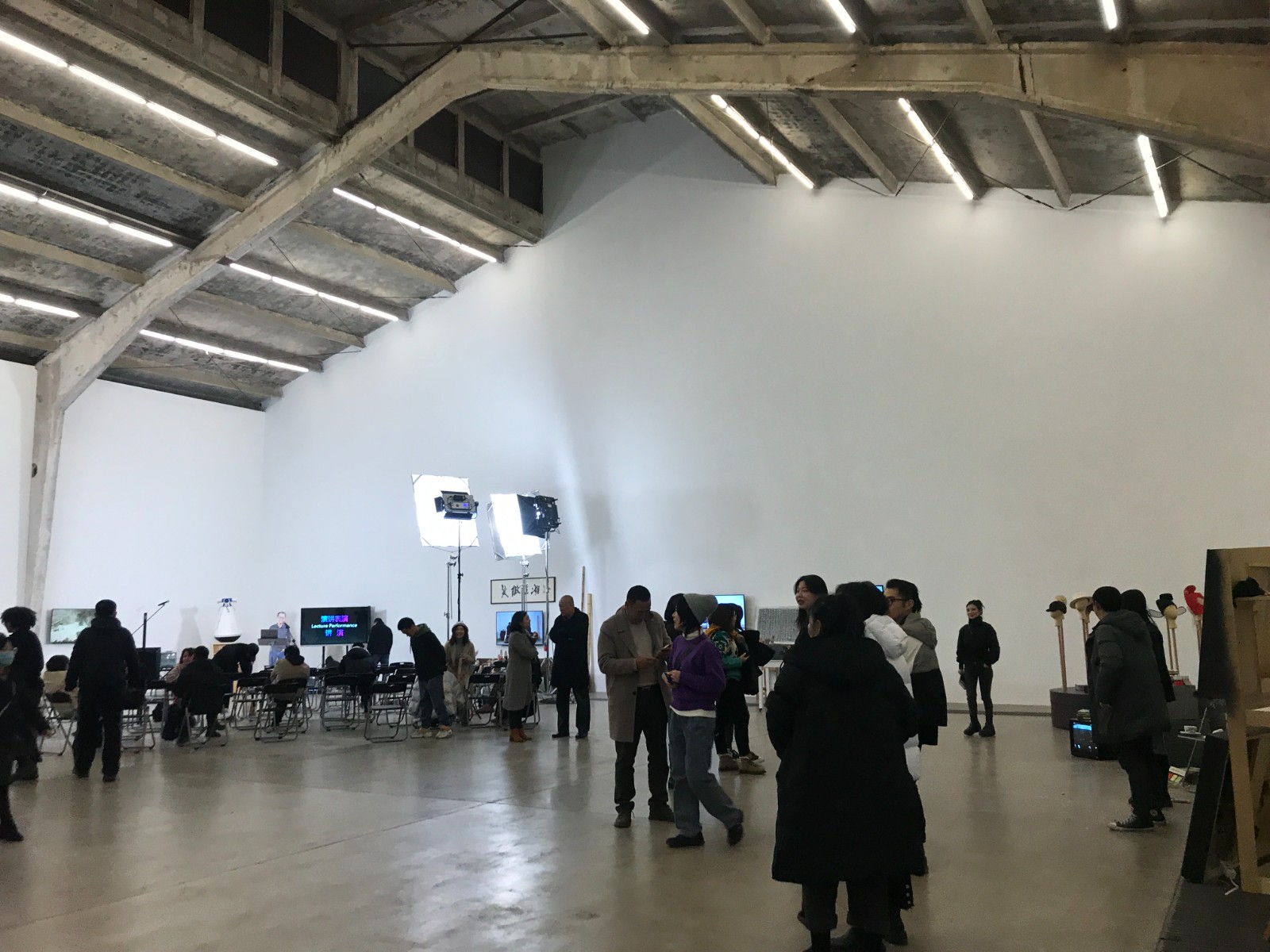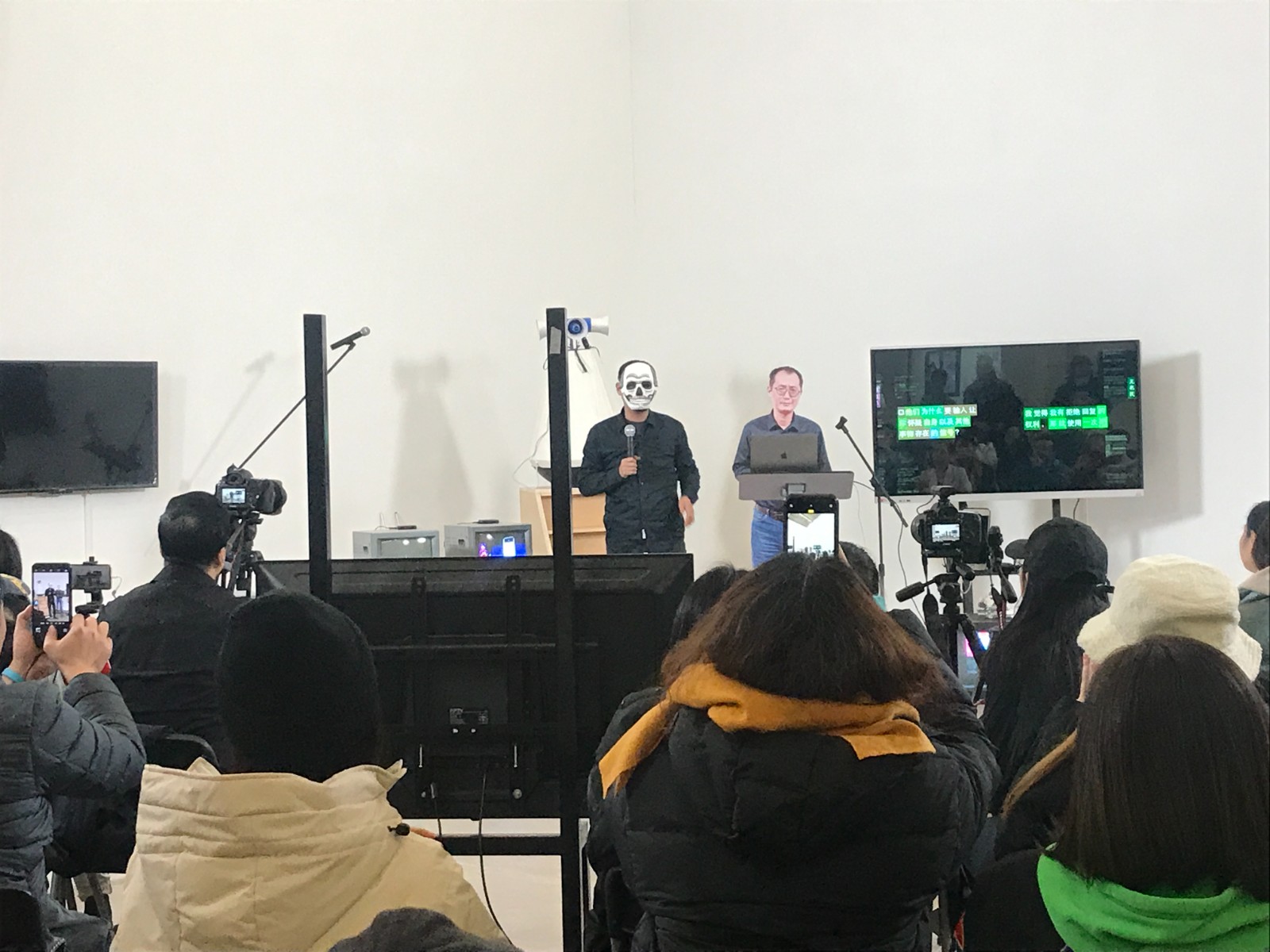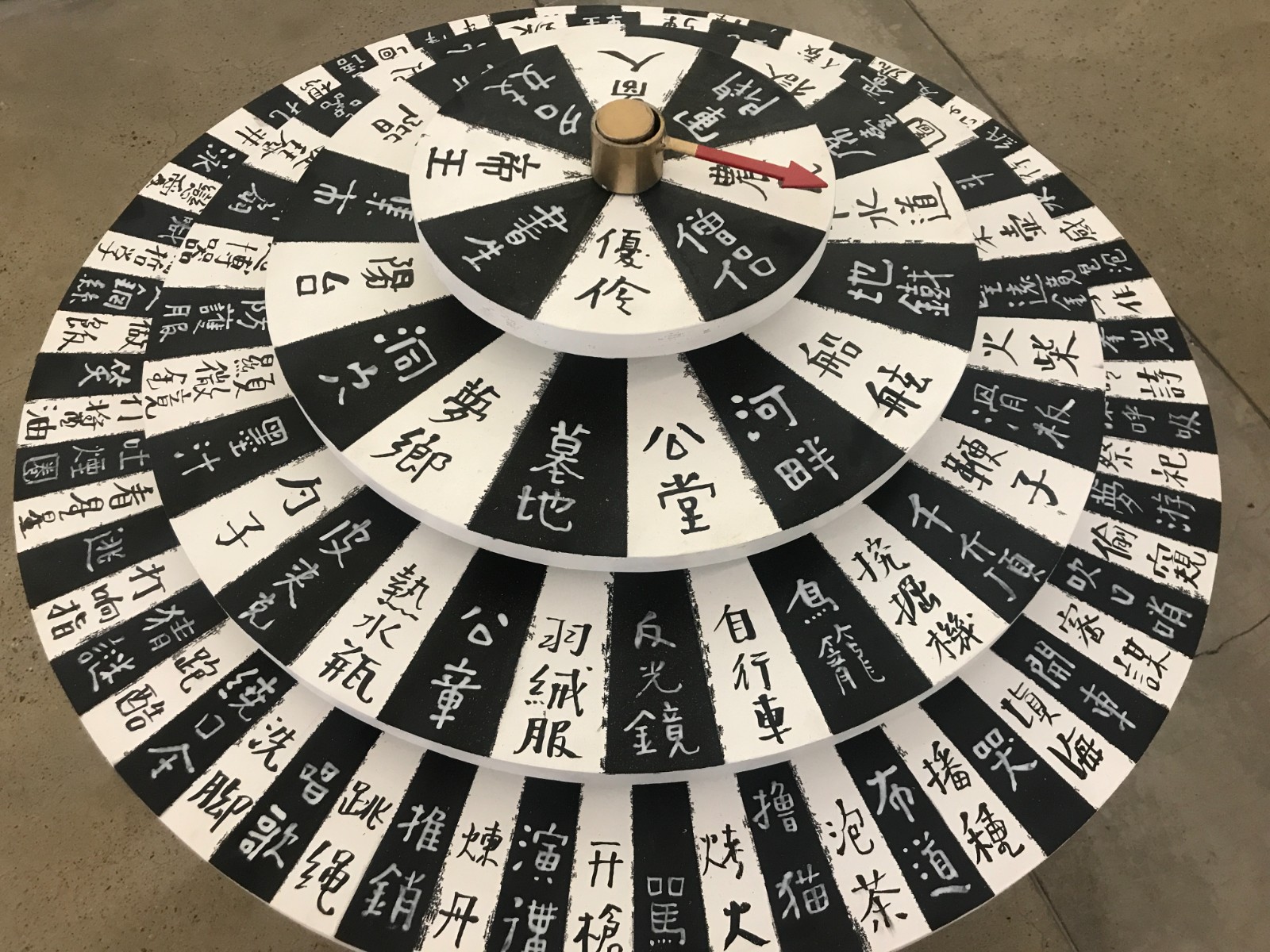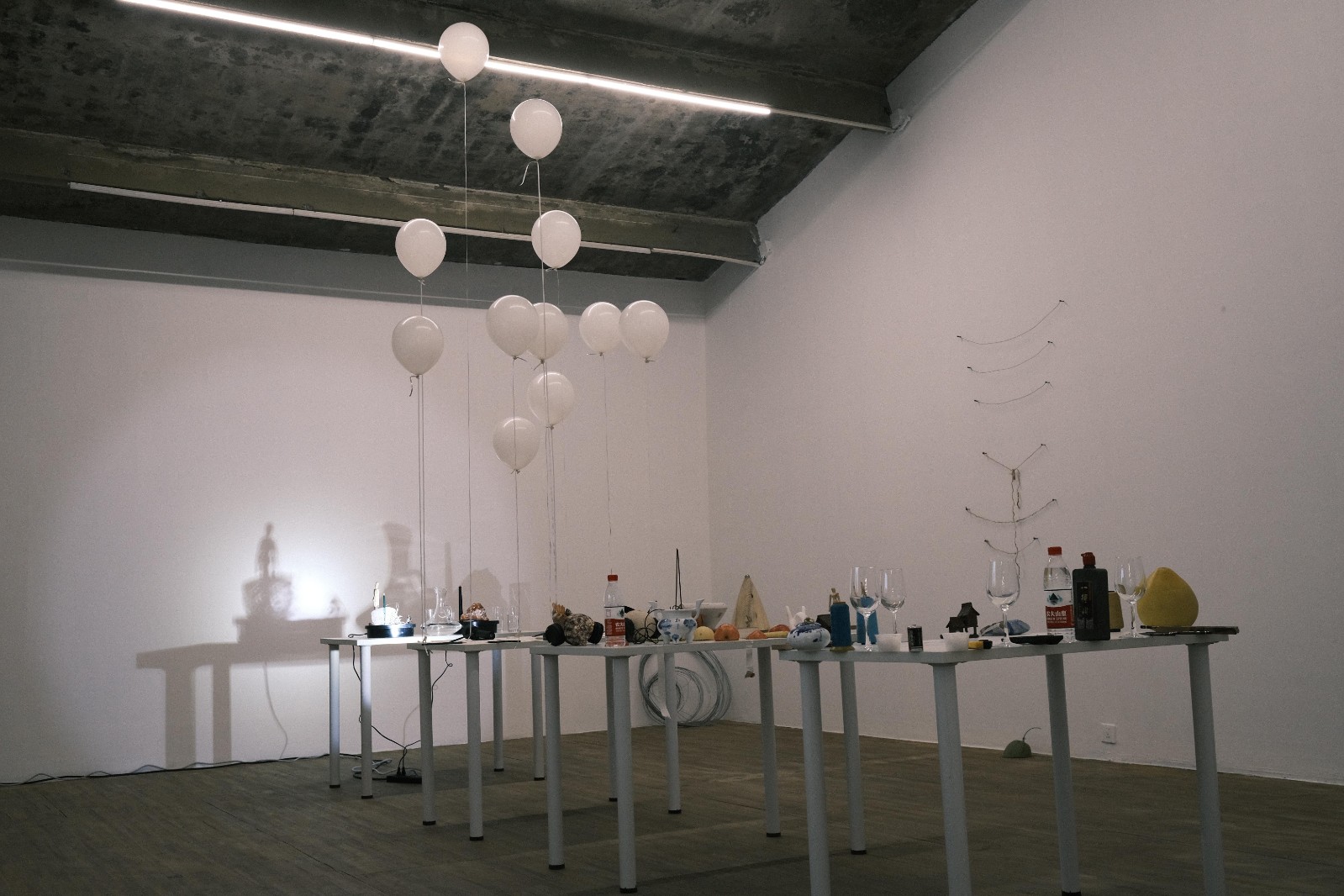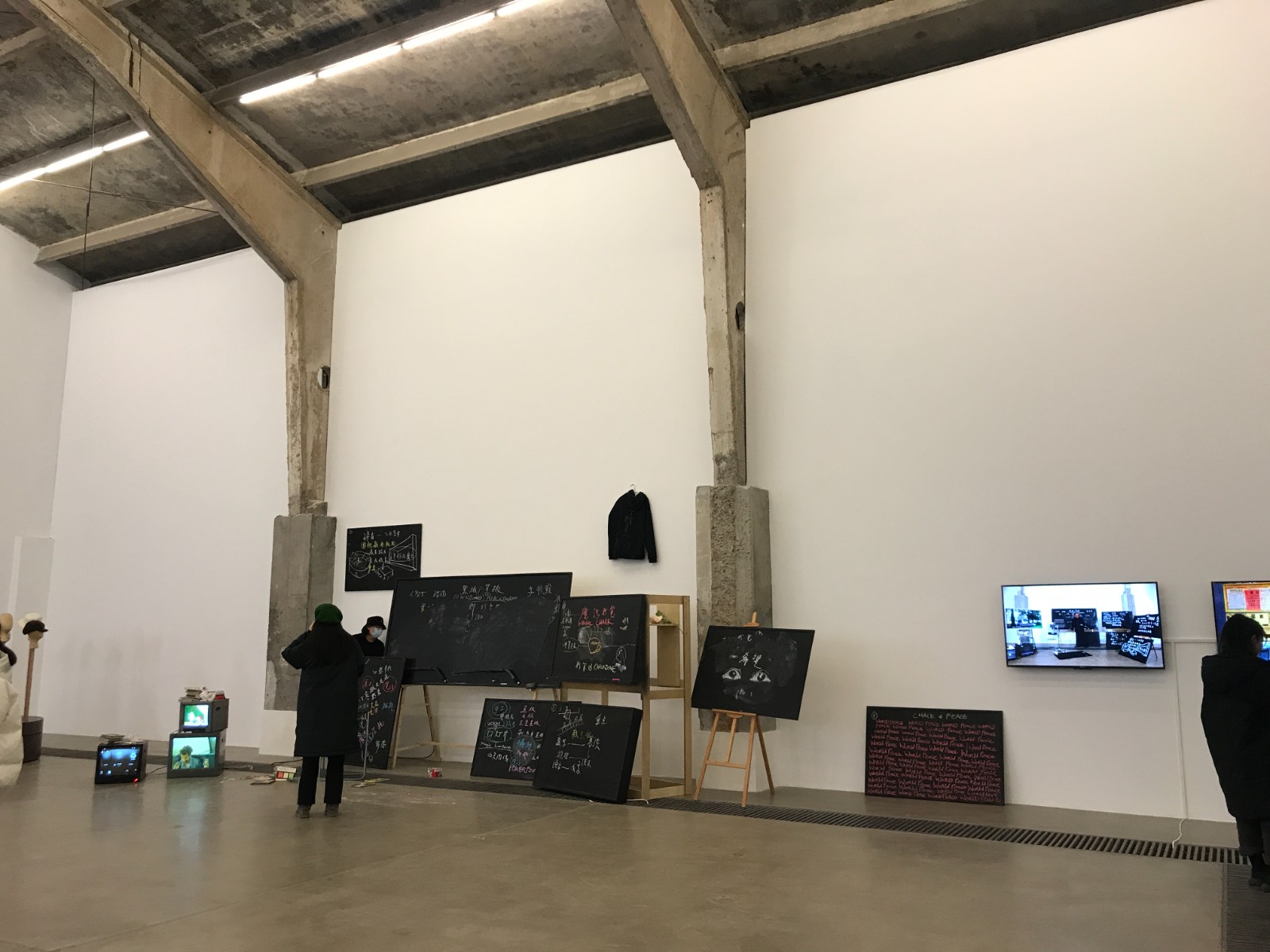
“This is not an exhibition, but an action.
This action is a comment/freezing/dismantling/excavation/archiving/disinfection of current history. It concerns our attitudes towards history and how we understand the historical mission of the artist.”
—Qiu Zhijie
Artist Qiu Jie’s latest exhibition entitled LECTURES was unveiled at Galleria Continua in Beijing. For him, this is far more than an “exhibition” as it can be regarded as an action. This action brought together 15 speeches and performances on art and history. With rich content, they were made into multiple installations. Therefore, installations, performances, dialogues and cartography as well as off-site live broadcasts or review videos were interspersed and integrated so as to offer a presentation for the public.
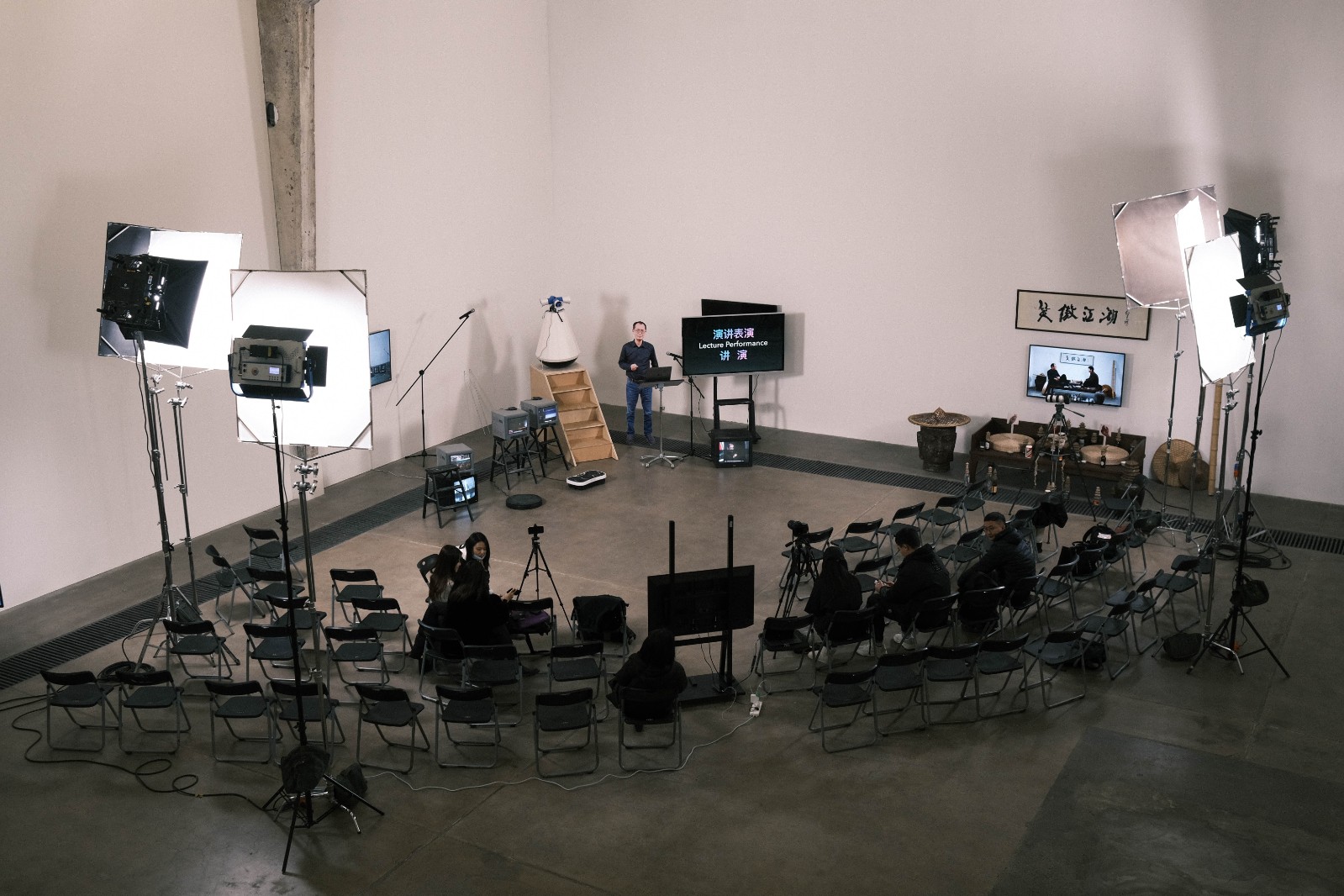
Exhibition View
Exhibition View ?? CAFA ART INFO
As an artist and professor, Qiu Zhijie has been involved in teaching, experimental theatre, action, performance and multiple art means, these actions are in line with his thinking, and there is no doubt that the interpretable content goes beyond the visual text of the exhibition. As Qiu Zhijie said, “The Maps can be seen as a methodology that carries through many forms. You can interpret it as 15 maps behind 15 lectures, or 15 lessons and 15 installations. They are the script for my lecture-performance and an itinerary of my action.” As mentioned in Umberto Eco’s Vertigine Della Lista, the list presents a series of things that belong to the same context or can be seen from the same perspective (even if they are not similar to each other at all.[1]

Qiu Zhijie drew a map for LECTURES
At the beginning of the exhibition, you can see the map of “Lectures”. The meanings of “Lecture” and “Performance”, are analyzed separately and deduced. As a way to drive knowledge production, lectures have also become a content medium for establishing communication between people. The words appearing in the “map” connect the basic clues of subsequent lectures and these elements also appear in different installation media.
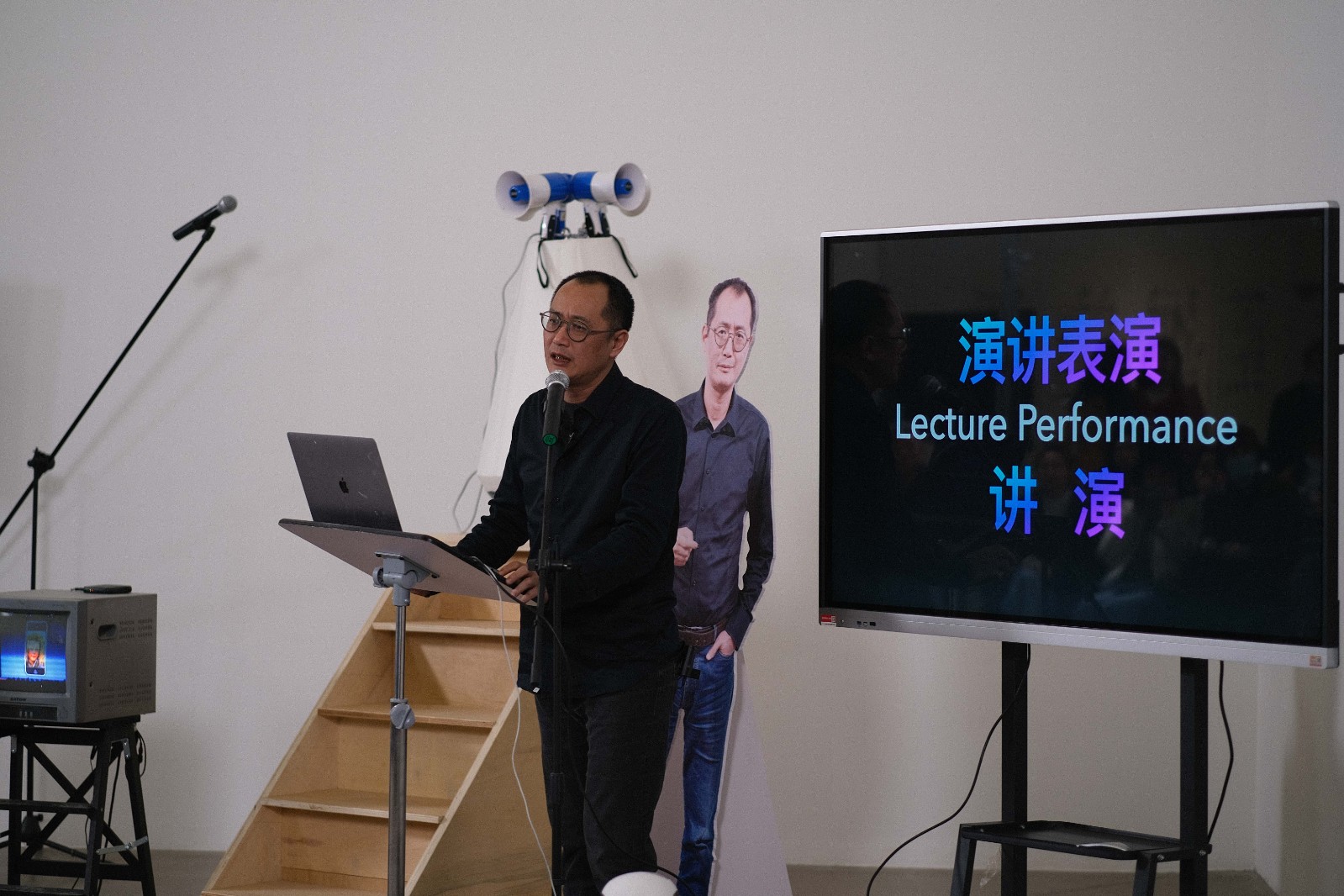
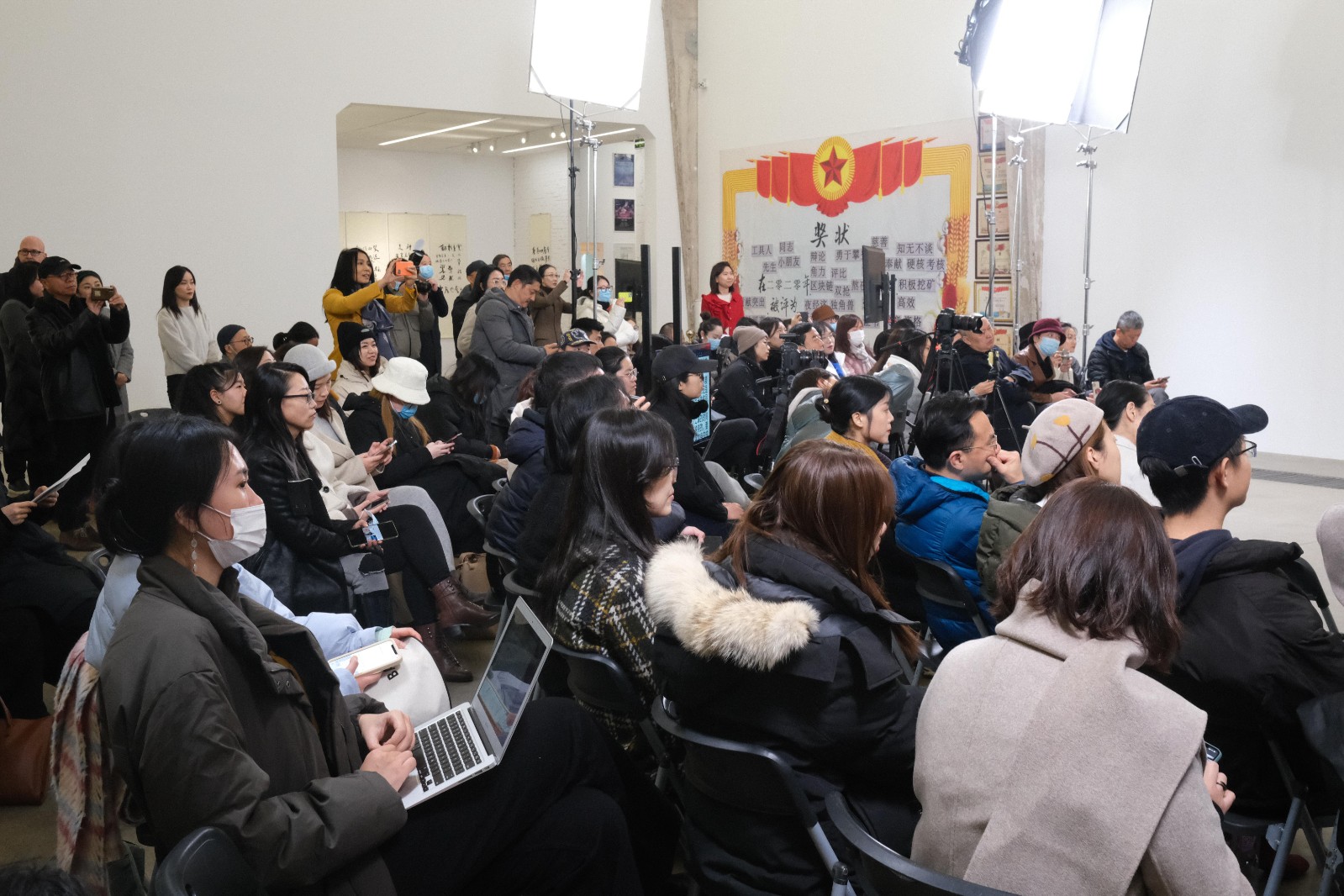
Qiu Zhijie, A Lecture about Lectures, December 10th, Galleria Continua
The first lecture started with “A Lecture about Lectures” held in Qiu Zhijie’s studio at 7pm on October 28th. On the opening night of December 10th, Qiu Zhijie presented this lecture again. Although the theme was the same, the details were refreshed. This is not only a part of the exhibition, an open knowledge classroom, but also a live performance. The lectures connected various interpretations and lecture scenes on the subject in history, such as temple sermons, business lectures, political propaganda and so on. At the same time, it is worth noting that he paid attention to “performance” communication while speaking and expanded the “performance” elements with the help of various props such as printing the same size humanoid board to make the “true and false Qiu Zhijie” on the same stage, or standing on the stairs, sometimes wearing a mask, sometimes standing on the fitness machine showing an extraordinary “performative” behavior, constantly mobilizing the attraction of the audience, forming a unique, energetic and inspiring cross-border experimental performance.
Qiu Zhijie's Performance ??CAFA ART INFO
In his exposition, he talked about his own understanding: “Lecture itself is a kind of performance, not just acting, but also calculation, demonstration and deduction. It is repeated inquiries about phenomena and facts.” The exchange site was placed in a semi-circular shape, alleging to be very symbolic ancient Greek-style square, and the open mode of the lecture also has a very close connotation relationship with the public square. The square was first a market and a public meeting venue and later developed into a venue for announcements, trials, and festivals, where a large number of religious and memorial buildings and sculptures are concentrated. He admitted that the attitude and actions of an artist’s constant questioning may point to the script of “The Death of Socrates.”
Exhibition View of The Skeleton Fantasy Show ??CAFA ART INFO
More than 10 sets of installations related to the lecture contents are displayed in the exhibition. Ten lectures have been held since October 28th, each focusing on a specific theme. Several sets of clues can also be clearly seen in the scene, they are based on the modern transliteration and reconstruction of classic stories. For example, “The Skeleton Fantasy Show”, the story began in the 2017 China Pavilion at Venice Biennale. As the curator, Qiu Zhijie revealed the different images that map and relate to each other in history: “Children Playing”, “The Knickknack Peddler”, “Zhuangzi Sighs over the Skeleton”, and the “Dance Macabre”, “vanitas still lifes” and the gravediggers in Act 5 of Hamlet from Western culture. The exhibition site was also built as a setting for “archaeology” and “tomb robbers”, showing the excavation of "skeleton art history"; another example is Qiu Zhijie’s dialogue with his friends, “The Smiling, Proud Wanderer”, the video of the dialogue between the two is full of interesting stories, just like a “contemporary fairy tale of martial heroes”: “On a dark and windy winter night, the falling leaves outside the wall are rustling. In a state of drunken ecstasy, they talked about Wuxia (martial heroes) novels.” Bottles were all over the floor. They changed the perspectives of participants and viewers, in an unrestrained way.
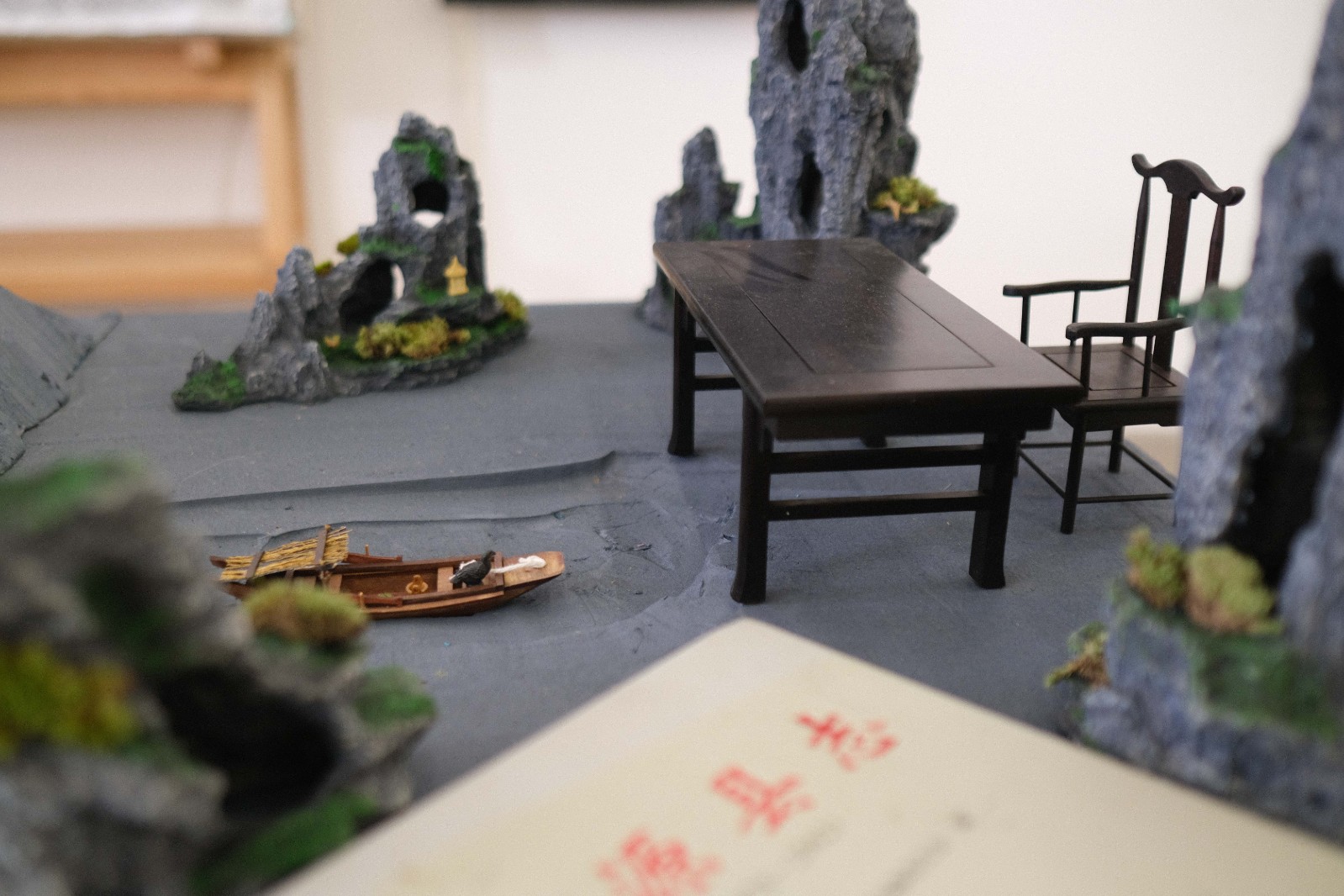

Exhibition View of The Peach Paradise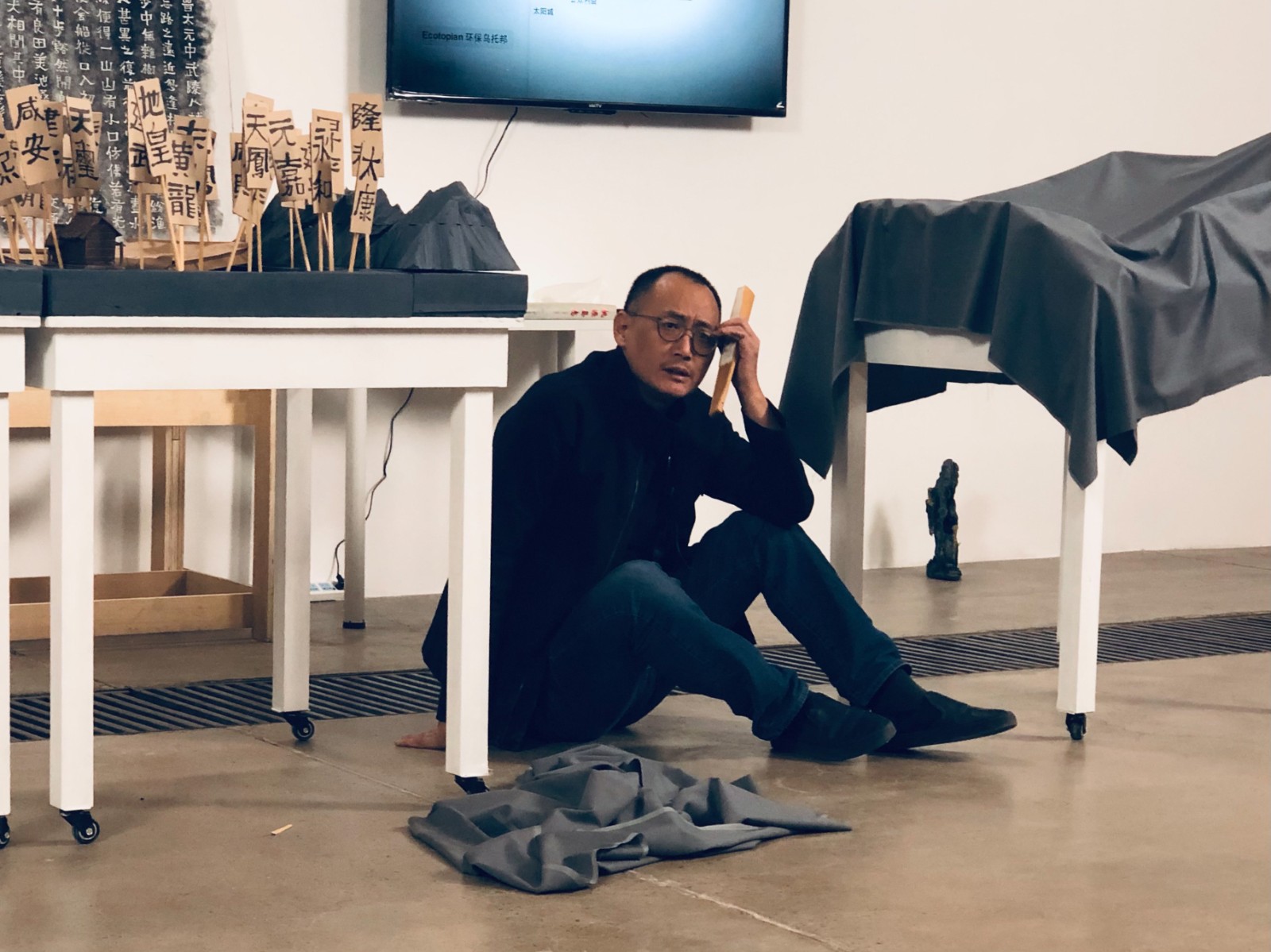
Qiu Zhijie a the scene
Poster of The Unicorn Workshop
Then there is “The Unicorn Workshop”, the artist is very sensitive to grasping the symbol of a unicorn, for example, “Unicorn Emoji” is one of the most favorite emojis of young people today. And unicorns can be found in all kinds of cultural traditions and stories, often appearing in noble and glamorous forms. He tries to clarify the animal characteristics in various cultures and stories, awakening people’s “unicorns in their hearts” and sending them the beautiful idea of individual “uniqueness”; like another lecture “The Peach Paradise”, it expresses the artist’s reflection through the context of history and script. “Is this a history lesson taught in an enclave of our memory or a well-thought-out immersive theater?”
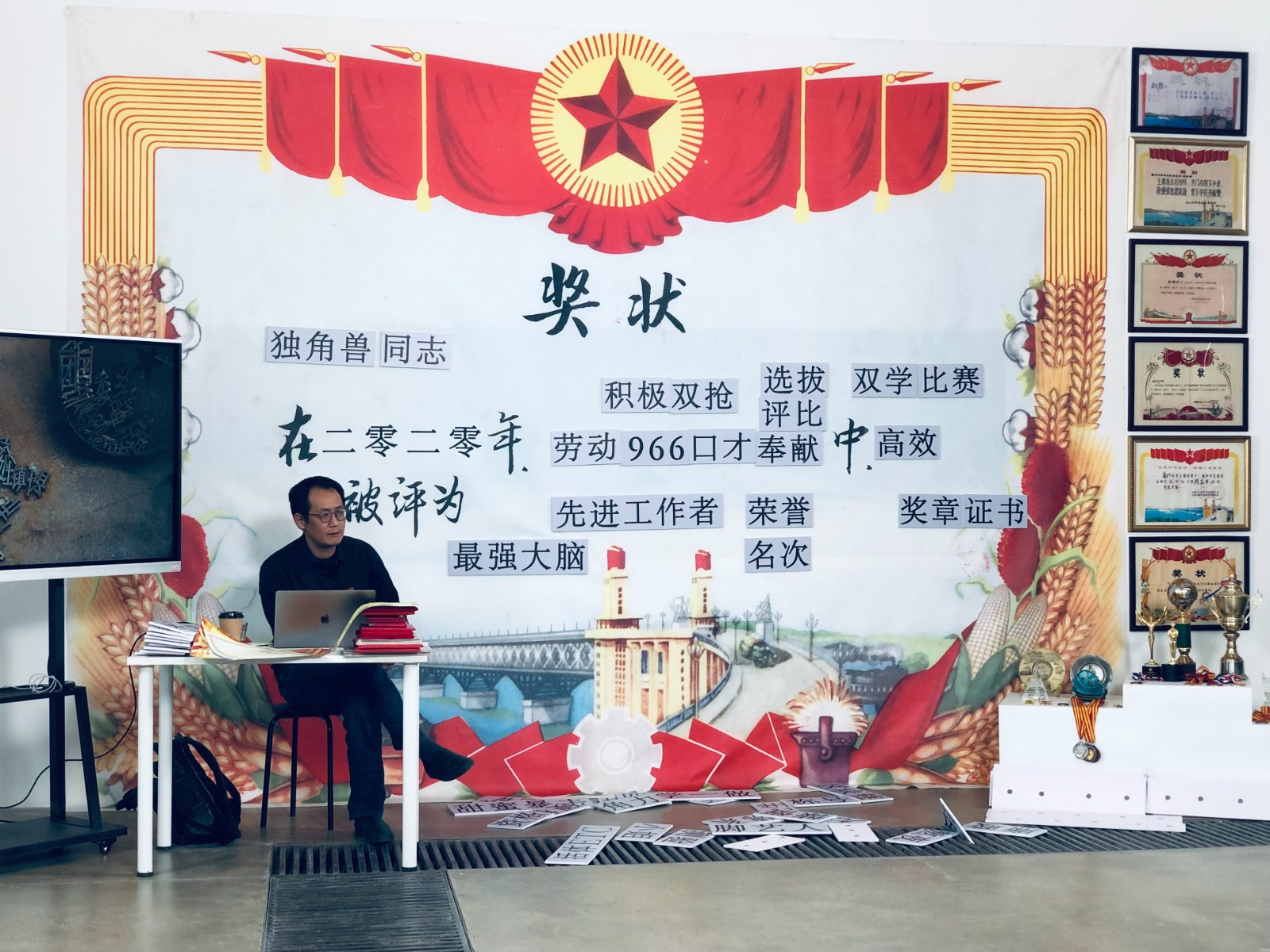
Exhibition View of Certificate of Merit, Certificate of Merit
There are also symbolic cases. For example, three special lectures: “Certificate of Merit, Certificate of Merit” on November 25th, “Blackboard, Blackboard” on December 5th, and“Hat, Hat” on December 19th. In each subject vocabulary encompasses the appearance to the deep meanings that are enough to form a book. They are closely related to a personal destiny, and they are also a distinctive symbol of the times. The “Certificate of Merit” lecture scene is a huge stage for commendation. As a kind of affirmation and encouragement, these honors have become a highlight moment in personal destiny. The text, official seal, pattern, ribbon and other elements have been disassembled and analyzed one by one. Undoubtedly what people see is the award certificate, and what is less known is the history behind it; the “blackboard” that symbolizes the scene of modern education, which accumulates time, effort and experience in repeated smearing and wiping. “And in front of the blackboard, the chalk ashes are spread profusely everywhere, just like martyrs,” this speech is undoubtedly Qiu Zhijie’s analysis of his own identity as a teacher and a tribute to his work.
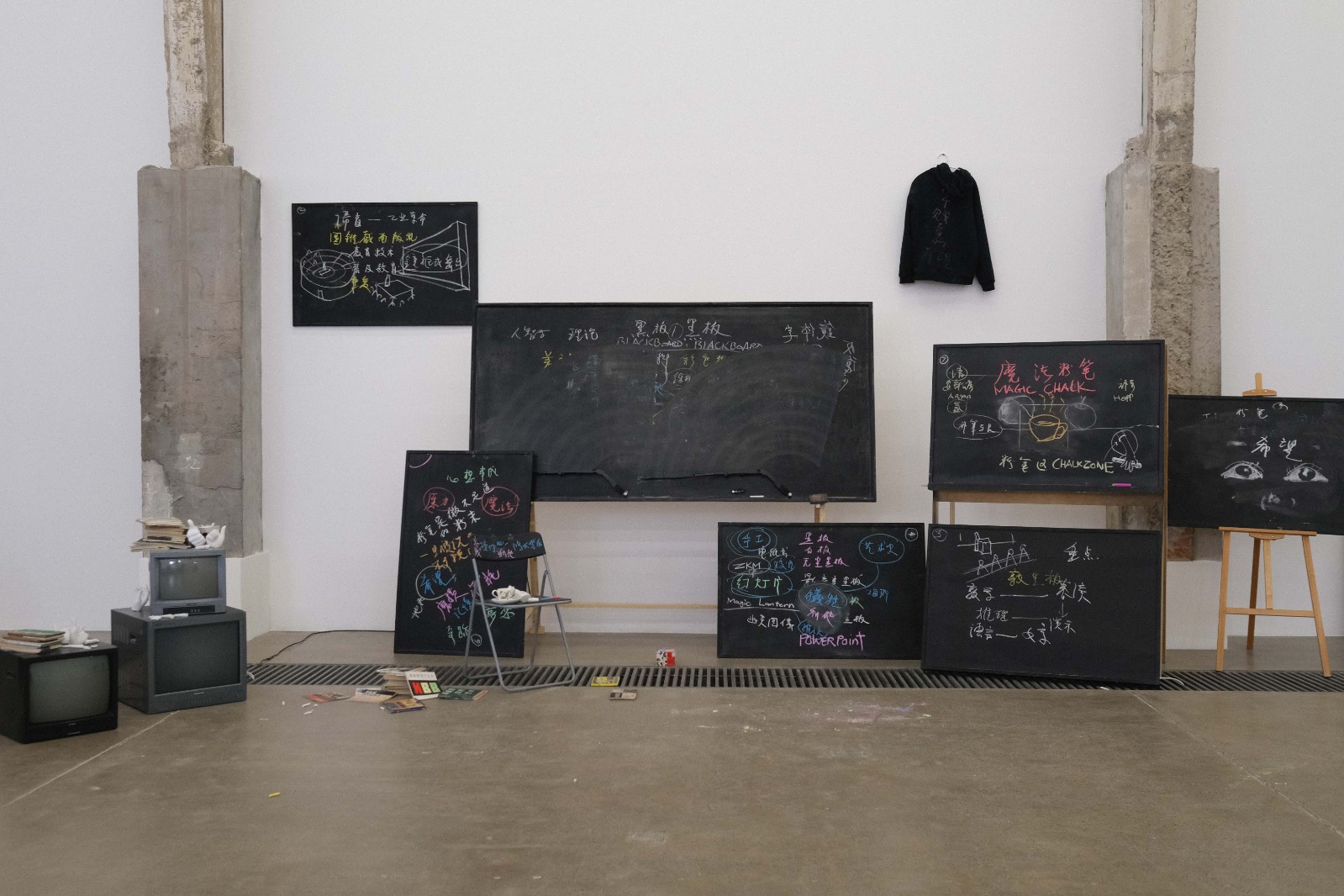
Exhibition View of Blackboard, Blackboard on December 5th

Exhibition View of Blackboard, Blackboard
In the “Hat” territory at the exhibition site, Qiu Zhijie introduced various “hats”: President Ford wore the Russian earcap “Ushanka” during his visit to the Soviet Union, the cowboy hat worn by Vice Chairman Deng Xiaoping in Texas during his visit to the United States, Comrade Lei Feng’s hat, etc., he said, “it is not only a kind of clothing, but also an identity symbol and political symbol”, which not only brings people into the story but also narrows the psychological distance of the audience.
Finally, another clear clue in the exhibition is the work completed by the interaction, communication and collaboration between Qiu Zhijie as a teacher and his students. For example, in “The Club of Awaking Sentences”, it “enhanced everyone’s ability to play eccentric and odd language games with the attitude of having fun.” The use of games to teach and play, in fact, has developed the active inspiration of thinking and the sensitive grasp of language. A closer look at “Awakening Sentences” is very similar to the current Internet language “Awareness in the World”: it puts the true attitude towards the incident in the lead and in a joking and more grounded way, it makes readers easy to accept and smile with a knowing heart.
Exhibition View of The Club of Awaking Sentences ?? CAFA ART INFO
At the same time, a large number of magical props were used in the show: black and white grid game on a turntable, a wake-up sentence plaque, Chinese hanging canvas, collage sentence frame, etc. With the rotation of the black and white grid plate, different vocabulary combinations can be achieved randomly, including identities, objects, locations, behaviors, etc., such as “monk, riverside, thermos, sermon”, “merchant, dreamland, match, cat”, participants can form sentences with verbs to express different meanings. According to the artist’s introduction, the dial can be randomly rotated to form more than 200,000 different sentences.
The “Object Theater” on November 9th was similar. The lecture was held in the classroom of the School of Experimental Art at the Central Academy of Fine Arts. Teachers and students together focused on the possibility of “Everyone is an Artist/Art in Daily Life”, they thought about this and explored different ways of realization, and proposed to learn to observe and think, lower the threshold of creation and develop the habit of hands-on. They use various objects as the performance elements of the theater. When the objects meet each other, they form different relationships, which inspires artistic activities. When the relationship dissipates, the objects are still objects.

Exhibition View of The Object Theater
Despite the efficiency and breadth of media communication in the information age, more people can watch lectures online. However, these text descriptions, video playbacks, and live broadcasts cannot restore the immediate reflections of the audience participating in the lectures. Qiu Zhijie once wrote in his book The important thing is the scene, “The scene means: you have to be there at that time. Your emotions and your body itself are part of the scene, and your every move will affect you in this scene. You are not observing the outside of it, but experiencing it and participating in the formation of it.”[2]
“Hat, Hat” was held on December 19th. The follow-up lectures will be held on a weekly schedule. On December 26th, “Meeting of Brushes between Lu Xun and Master Hongyi” will be held and on January 2nd, 2021, Qiu Zhijie will become a “host” in the “Dunhuang Forum”, or incarnate the characters closely related to Dunhuang, for example, Aurel Stein, Paul Pelliot, Sven Hedin, Ferdinand von Richthofen, Kishen Singh, Zhang Daqian, etc., the characters will sit together and participate in spirited discussions.
In “How to Draw a Satirical Cartoon” on January 9th, it is a workshop that explores how to draw a satirical cartoon. In addition to the research on the widely used cartoon techniques, it will also focus on the stereotypes hidden in the “anti-Chinese Cartoon” in the past 100 years and fight back of course; in the last session of “Art History of the Future” on January 16th, the speaker will tentatively expand discussions on the future of art history, “It is impossible to interpret art history in the next 50 years.” But Qiu Zhijie believes that “all the nonsense about the future has a potential of being a shaping force at the same time.”
Each lecture contains a wealth of “map information”, and it is impossible to cover these complex and rich practical performances with short lectures. Therefore, on the one hand, based on the exhibition site, more than a dozen different installations are integrated into works. It is not only a podium and stage for the speaker, but it can also bring an intuitive touch for the audience. But on the other hand, these settings make it not just a simple exhibition. Recorded by cameras or spread in real time, it strengthens the knowledge sharing method based on the identity of the teacher, allowing viewers to read and watch repeatedly, so they can start to find information, ask questions, and join in performances, etc., this exhibition will show different fermentation effects on both the online and offline ends.
Exhibition View ??CAFA ART INFO
The artist’s starting point is sincerity as he pays attention to the issues that arise in the artistic phenomenon, and he did not just provide his answers to the questions for the time being. Instead, he focuses on actions, using various historical stories such as fables and reminders, which he regards as “the possibility of overall art.” In the previous section, the audience was presented with these action guidelines: “This totality is symbolic, but it is also a subtle task: providing speech but refusing to judge, providing scenes but there is a need to beware of hallucinations, providing action but refuse to act.” These issues are destined to go beyond art. Everyone has his or her own list of actions. “I hope to use this action to explore how to make art work nourish a unique thinking ability, so as to force myself to stay in a radical position for a long time,” as Qiu Zhijie said.
Text by Zhang Yizhi, edited and translated by Sue/CAFA ART INFO
Image Courtesy of the artist and Galleria Continua.
Notes:
[1] Umberto Eco, Vertigine Della Lista (Beijing: Central Compilation & Translation, 2013-10), p131.
[2] Qiu Zhijie, The important thing is the scene (Beijing: China Renmin University Press, 2003-1), p2.
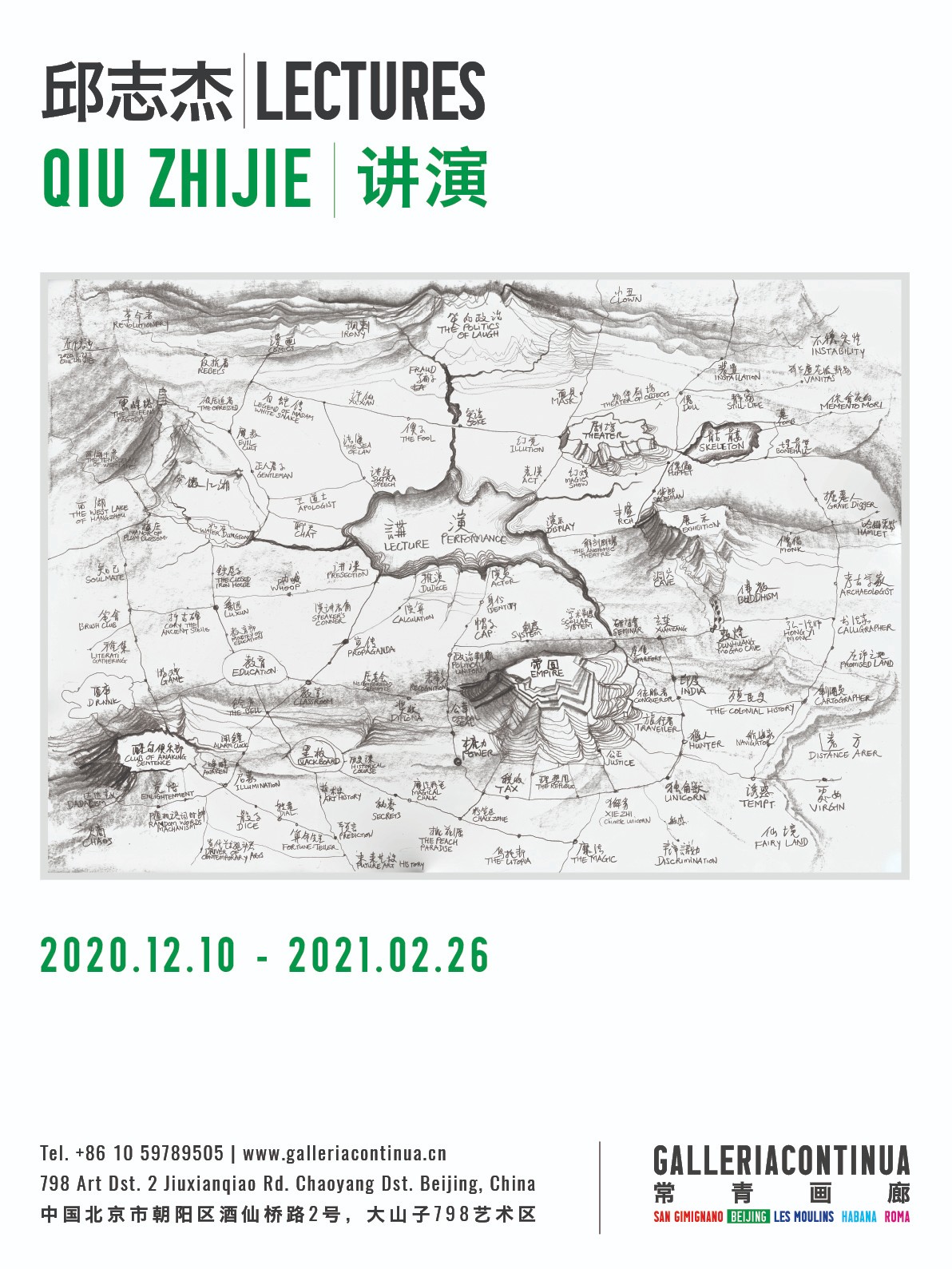
About the exhibition
Duration: December 10 th , 2020 – February 26 st , 2021
#8503, Dashanzi 798 Art Factory, 2 Jiuxianqiao Road, Chaoyang Dst.
100015 Beijing, China | +86.10.59789505
beijing@galleriacontinua.cn | www.galleriacontinua.com



